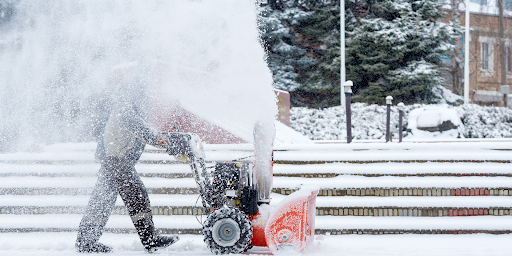
Safety should always be a year-round priority in the workplace, but as we steel ourselves for the snow and ice that often accompany this time of year, it makes sense to look at the most common cold weather injuries and what can be done to prevent them.
Let’s start by taking a look at the most common types of cold weather injuries in the workplace and what employers should do to be prepared:
1. “Slip, Trip, and Fall” injuries happen year-round in the workplace. Indoors or outside, something like an unmarked door sill, uneven pavement, or a steep stairwell can cause serious injury. But when temperatures plummet and ice and snow become a factor, the risk of these injuries skyrockets.
When the storm clouds gather and the temperature drops, doing the following will go a long way toward heading off serious incidents:
· Inspect outside areas and entrances for any wet, cold, or slippery surfaces.
· Salt and de-ice heavily-used areas as soon as possible.
· Place cones or warning signs in hazardous areas until they can be cleared.
· Have labor, materials, and equipment primed and ready to clean snow and ice from parking lots and walkways immediately.
2. Workplace Vehicle Accidents are also more prevalent in cold weather due to frost, black ice, and snow. When your employees have to travel to complete their job responsibilities, workers’ compensation covers any accidents or injuries that occur. Many employers require those who drive on the job to complete a defensive driving training course, with special emphasis on strategies for driving more safely in cold weather such as:
· Avoiding tailgating; keeping larger distances between vehicles on the road.
· Leaving the road safely in intense weather.
· Assuring that windshield wiper fluid, wiper blades, headlights, and defrosters are working well.
· Packing weather-related tools such as salt and shovels in the vehicle in case of emergency.
3. Electric Shock, Burns, and Workplace Fires
The lower the temperature, the less stable and consistent the power grid is. That’s why winter brings with it a spike in these types of injuries, especially among those whose job it is to repair downed power lines and perform building maintenance. Because the power supply is less predictable at lower temperatures, surges that cause burns and lacerations are more common.
· The best thing you can do is to make it clear to your employees—especially the maintenance staff—that only a trained professional should attempt to handle a live power line or perform electrical work in your workplace.
· Provide information to everyone about who to call in the event of a short circuit or power surge.
4. Exposure Injuries
If you have employees who work outdoors between November and March in the quad-state area, guard against injuries caused by cold temperatures including frostbite and hypothermia. Provide protective equipment and clothing such as functional gloves, footwear, and outerwear. Be sure clothing is fitted properly so that rain and snow does not get into your workers’ eyes. Footwear should not only keep workers’ feet from getting cold; it should also provide the best traction possible to avoid slips, trips, and falls.
· Ensure that your outdoor crews wear the protective clothing you provide for them. It’s especially crucial that they wear gear that protects their ears, fingers, and toes.
· Make sure your employees who work outdoors know and understand the signs of frostbite and hypothermia. Urge them to act promptly if they experience any of them.
Identifying and planning for the cold weather injuries that occur during the winter in Western and Central Maryland is the most important thing you can do as an employer to keep your workers safe on the job. Using these winter safety tips for the workplace will go a long way toward minimizing workers compensation claims. And remember: with a bit of planning and adequate preparation, you can prevent many of the most common cold-weather workplace injuries.

